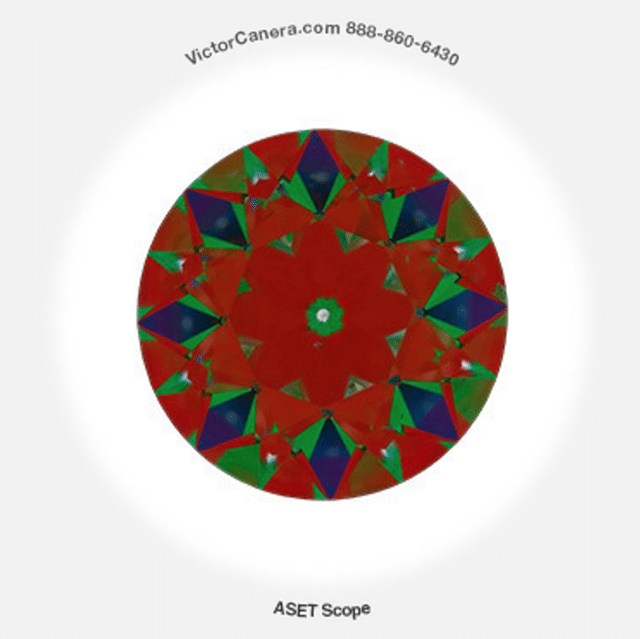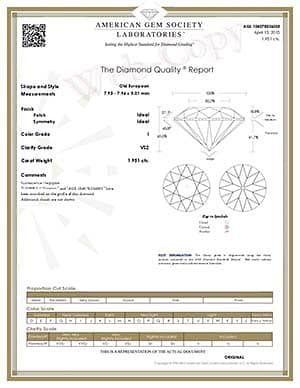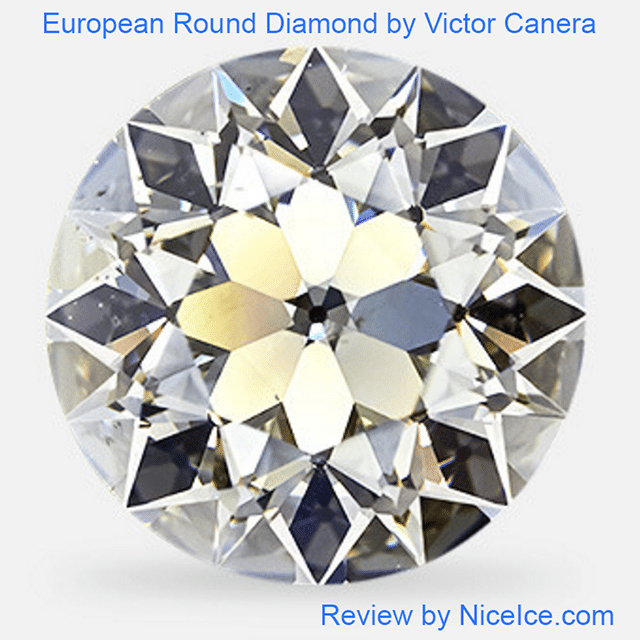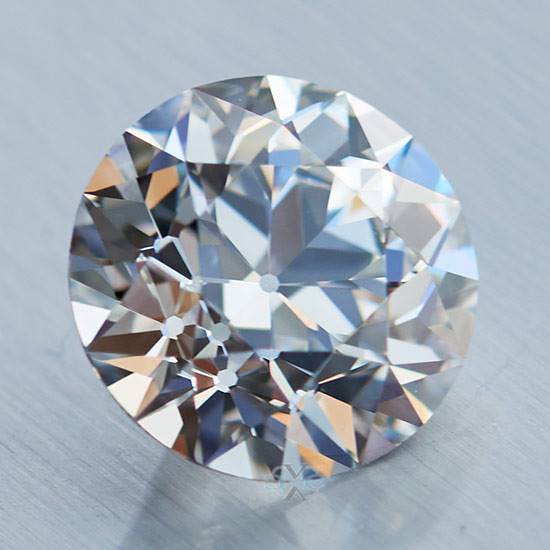The first thing that I thought of when a client sent me a link to this 1.951 carat, I-color, VS-2 clarity, Victor Canera European Cut Diamond earlier this week was the famous line “and now for something completely different!” I can’t really explain why that famous line from Monty Python’s Flying Circus popped into my head, but it did.
Perhaps because Victor Canera’s European round cut diamond is based upon the facet structure of an old European cut diamond [OEC] but has been redesigned using modern technology with light performance in mind. In that case, Victor Canera revived the old European round diamond and gave it new life. That makes it a worthy option for people looking for something unique and different. Especially if you appreciate the chunkier flashes of light that vintage diamonds tend to offer.
Old European Cut Diamonds [OEC]:
Old European Cut Diamonds date back to the early 1900s and were considered to be an improvement upon the design of the Old Mine Cut Diamond [OMC] which dates back to the 1800s. The traditional Old European Cut Diamond has a small table, a steep crown section, and featured a smaller culet facet than most Old Mine Cut Diamonds. Another trait that distinguished Old European Cut Diamonds from Old Mine Cut Diamonds is that they were more symmetrical, more round in shape.

I’m told that the broad pavilion facets light up asymmetrically and reflect back amazing colors and soft pastel hues towards whoever is viewing the diamond.
No doubt that the modern version of the OEC created by Victor Canera has its place in the market, but I have to admit that I’m more of a modern round brilliant cut kind of guy.
Then again, I’ve never had the privilege of seeing a VC OEC diamond in person because I’m down in Mexico and he can’t exactly ship one to me (it would never get here) but it shows a lot of red in the ASET image, which means that it should be nice and bright!
One of the things that Victor wanted to do was create a version of Old European Cut Diamond that offered a more symmetrical shape and significantly better light return.
Based upon the ASET image provided, it certainly looks like he achieved his goal, you’re not going to get this type of light performance out of a traditional OEC diamond.
Suffice to say that if you’re a fan of the way vintage diamonds look but want one that is a top performer in its class, then it seems to me that the Victor Canera Old European cut diamond is the obvious choice. Vintage diamonds produced from the era in which Old European cut diamonds were popular, were not cut to deliver this type of light performance, they were cut to maximize the yield of carat weight.
Modern OEC versus Vintage OEC diamonds:
I really enjoyed talking with Victor Canera about the transitions that he made during the creation process to develop this modern rendition of the classic Old European Cut Diamond. Just so you know, I didn’t just read the tutorial on OEC diamonds featured on Victor Canera’s website and give it my own spin. I picked up the telephone and talked with Victor for about an hour to get a better understanding of what makes his version of the OEC diamond different, what makes it special, and why my clients might want one.
When I asked Victor why he decided to embark on the journey to create a better OEC diamond, the primary reason was that it was difficult to find OECs that were not damaged in some way, and practically impossible to find any that performed well by the standards that we use to judge light performance today. Old European Cut Diamonds are a popular center stone for the handmade jewelry created by Victor Canera, and he needed a reliable supply of truly well-made stones.

If you’re experienced with the usual format of a Diamond Quality Document issued by the American Gem Society Laboratory (AGSL) for an AGS Ideal-0 cut diamond such as the Hearts and Arrows round diamonds from Victor Canera, you’ll likely notice right away that the reports issued for OEC diamonds look different.
It does not feature an overall cut grade, nor does it feature an ASET scan produced by the Angular Spectrum Evaluation Technology that is an integral part of the light performance grading platform. This is because the AGS Laboratory does not provide Light Performance or Cut scores for OEC diamonds, and doesn’t have a database of ASET images for vintage type stones.
And it probably doesn’t make financial sense for the AGSL to spend the research and development money that would be required to establish AGS Ideal-0 performance standards for this shape.
Fortunately for us, Victor Canera provides ASET and Ideal Scope images on the diamond details pages provided for every Victor Canera Old European Cut Diamond. It is clear to me that Victor Canera offers an Old European Cut Diamond that delivers a more symmetrical shape and significantly better light return than traditional OEC diamonds.
I hope that you will take advantage of my free Diamond Concierge Service if you would like help selecting the best option available, and tell Victor Canera that you read about his diamonds on Nice Ice if you decide to order one.
The Flower Effect of Victor Canera OEC diamonds:

The creation of hearts and arrows patterns in round diamonds requires incredible skill and precision, and incredible consistency in facet structure and indexing.
I imagine that the creation of the flower pattern that is visible in Victor Canera Old European cut diamonds requires an equal amount of skill and planning to create.
I also imagine that because of all the red located under the table facet of the diamond, the flower pattern will be even more apparent because the pavilion’s main facets will light up, and reflect all sorts of vibrant, pastel colors back up towards you.
The color red by the way in an ASET image represents the brightest light source in the room being gathered by the facets of the diamond and reflected back up towards the viewer.
No doubt that you’re going to find yourself lost in this diamond as if you were looking through a Kaleidoscope. I hope that you find this sort of thing as mesmerizing as I do!
The Kozibe Effect of Victor Canera OEC diamonds:

As stated previously I’m more of a modern round brilliant kind of a guy. The term “Kozibe effect” refers to the effect created by the visual properties of the diamond, that result in reflections of the polished culet facet reflecting outwards through the crown facets, as is pictured to the left.
If you look closely you will be able to see the small light grey circle in the middle of the table facet that represents the culet or bottom point of the diamond. And then if you look in the relative seven o’clock region of the crown facets (lower left corner) you’ll be able to see several reflections of the culet facet reflecting throughout the diamond, the location will change as the diamond is viewed from different vantage points.
Video of Victor Canera Old European Cut Diamonds:
Victor Canera was kind enough to share this video comparison of this 1.030 carat, E-color, VS-1 clarity, Victor Canera Old European Cut Round Diamond (pictured left) and this 1.098 carat, F-color, VS-1 clarity, Old European Cut Round Diamond by Victor Canera (pictured right) that shows the wonderful broad flashes of light that these diamonds exhibit.
https://www.youtube.com/watch?v=vQnERePjQbI
